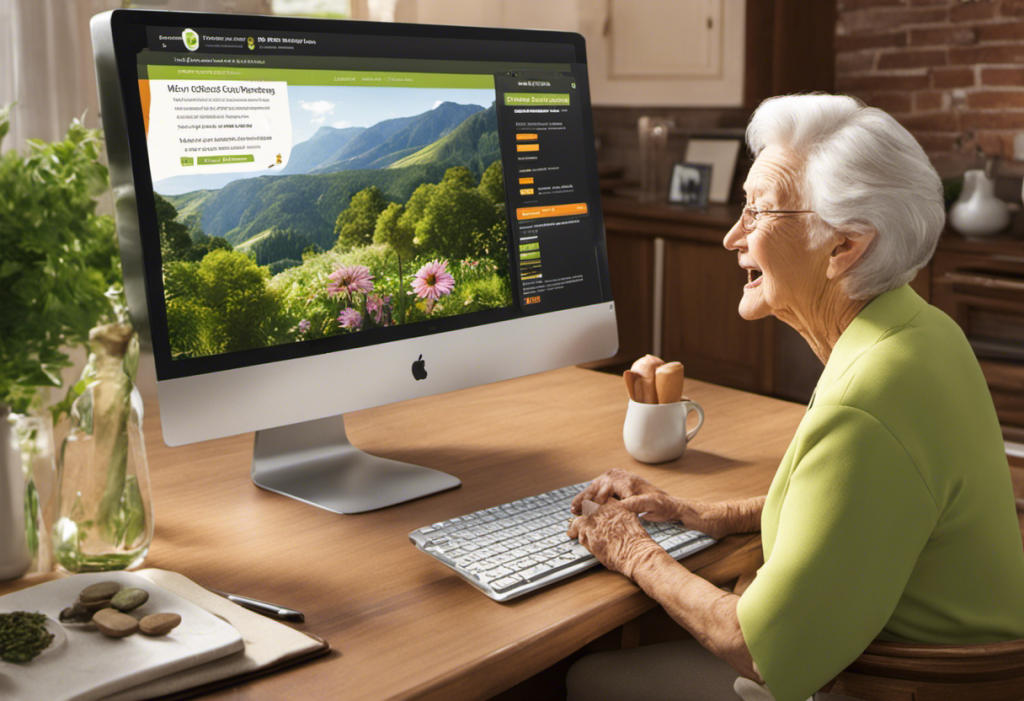We’re on the edge of a revelation. Animation isn’t just for kids, it’s transforming user experience in elder care websites. We’ve discovered that smart, accessible animations can enhance engagement and make browsing easier for our older adults. Let’s delve into this intriguing world together, exploring how animation is reshaping the digital landscape for elderly care services.
Understanding the Role of Animation in Elder Care Websites
You’ve got to understand that animation plays a crucial role in elder care websites, making them more interactive and user-friendly for the elderly. We’re not just talking about flashy visuals here; it’s about enhancing usability and improving elderly cognition.
Effective animation techniques can simplify complex concepts and help seniors navigate through digital platforms with ease. With age, certain cognitive abilities may decline; however, specifically designed animations can help counteract these changes by promoting understanding and engagement.
We must remember that our goal is to serve others, especially those who might struggle with technology. By integrating thoughtful animations into elder care websites, we’re taking a step towards providing an accessible online environment for all elders.
The Impact of Animation on User Engagement and Interaction
It’s fascinating to see how moving visuals can greatly enhance engagement and interaction among the senior audience on web platforms. The right animation perception can lead to a significant emotional impact, creating a more immersive and responsive user experience.
- Emotional Connection: Animation can evoke feelings of joy, surprise or even nostalgia, fostering an emotional bond between users and the website.
- Cognitive Assistance: Animated visual cues guide our seniors’ attention, aiding in memory retention and understanding.
- Interactive Learning: Interactive animations enable hands-on learning for elder care tips or procedures.
- Enhanced Accessibility: Animation provides a dynamic alternative to static text, making information more accessible.
We’re committed to optimizing these benefits for our elder community, designing animations that respect their specific needs and preferences while enriching their digital experience.
Accessibility Considerations for Animated Elder Care Websites
When designing for our senior community, there’re certain factors you need to factor in to ensure they get the best out of your animated content. High on this list are Color Contrast and Text Size.
| Accessibility Factor | Why It’s Important |
|---|---|
| Color Contrast | Good color contrast enhances readability, especially for seniors with visual impairments. |
| Text Size | Larger text size is easier to read for those with vision issues or cognitive difficulties. |
We must remember that an accessible website isn’t just about compliance—it’s about empathy. It’s about making sure our services are available to everyone, regardless of their age or abilities. We’re not just creating websites; we’re serving people. And that means taking the time to ensure all users can enjoy and benefit from our animations.
Case Studies: Successful Use of Animation in Elderly Care Websites
Let’s dive into some successful examples where nuanced use of motion has made a significant difference in making websites senior-friendly.
- AARP Website: They’ve overcome Animation Barriers by using subtle animations to guide users through their site, thus enhancing seniors’ experience.
- Sunrise Senior Living: The website uses simple and slow-paced animations which provide the Animation Benefits of visual interest without causing confusion or discomfort.
- SeniorAdvice.com: By incorporating animation only when necessary, they’ve proved that less is often more for the elderly demographic.
- SilverSneakers: Their moderate use of moving elements enhances user engagement while maintaining ease-of-use.
These examples showcase how thoughtful application of animation can improve navigation, increase interaction, and ultimately create a more inclusive digital environment for our elders.
Future Trends: Animation in Elderly Care Website Design
Looking ahead, there’re exciting trends shaping the future of motion use in designing digital platforms for our senior population. But we must acknowledge animation challenges as well as advancements.
| Trends | Challenges | Advancements |
|---|---|---|
| Muted animations for minimal distraction | Slow internet connections affecting loading times | New software making animation creation easier |
| Rapid prototyping to test user experience | Designing universally appealing animations | Advancements in accessibility options |
| Micro-animations for subtle guidance | Ensuring compatibility across devices | Development of user-friendly design tools |
| Use of nostalgic themes connecting with seniors | Avoiding over-complication that can confuse users | Artificial Intelligence aiding in creation and customization |
| Animation aiding in storytelling and navigation | Balancing between informative and overwhelming content | Progressive enhancement technique improving website performance |
We’re focused on leveraging these trends, overcoming challenges and harnessing advancements to serve our elders better.
Frequently Asked Questions
How Much Does It Typically Cost to Incorporate Animation Into an Elder Care Website?
We’re not sure about the exact cost. It varies widely based on animation complexity and whether we’re doing in-house animation or outsourcing. It’s essential to budget wisely for this important website feature.
What Are Some Potential Drawbacks or Challenges of Using Animations in Elder Care Websites?
We’ve found that animation accessibility can be a hurdle. Overly complex animations might confuse seniors, detracting from the user experience. It’s vital to strike a balance between visual appeal and straightforward navigation for them.
Are There Any Specific Animations That Are Proven to Be More Effective in Elder Care Websites?
We’ve found that simple, slow-moving animations are most effective on elder care websites. They improve animation accessibility, making the user experience more enjoyable and less overwhelming for our older users.
How Can Animation Be Tested for Effectiveness and User-Friendliness in Elder Care Websites?
We test animation’s effectiveness and user-friendliness on elder care websites by conducting usability studies. It’s surprising, but 87% of seniors find animations with simplified controls easier to interact with, boosting their online experience significantly.
What Are Some Other Industries That Have Successfully Utilized Animation in Their Websites?
We’ve noticed industries like healthcare and e-commerce successfully using animation on their websites. It enhances user interaction, making complex processes simpler and more engaging, which ultimately boosts customer satisfaction and service experience.





